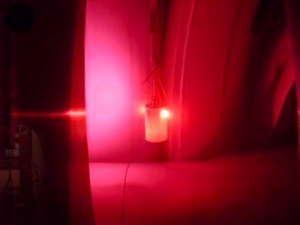TJ-II:Plasma Wall Interaction: Difference between revisions
Jump to navigation
Jump to search
mNo edit summary |
|||
| Line 1: | Line 1: | ||
To condition the wall of the [[TJ-II]] vacuum vessel, a number of techniques is used, | To condition the wall of the [[TJ-II]] vacuum vessel, a number of techniques is used, | ||
such as a baking system. | such as a baking system. | ||
<ref>[http://dx.doi.org/10.1109/FUSION.1999.849826 R. Carrasco, '' Hybrid baking system for the vacuum vessel of the | <ref>[http://dx.doi.org/10.1109/FUSION.1999.849826 R. Carrasco, '' Hybrid baking system for the vacuum vessel of the Spanish stellarator TJ-II'', Proc. 18<sup>th</sup> Symposium on Fusion Engineering (1999) 231-234]</ref> | ||
== Glow Discharge Cleaning == | == Glow Discharge Cleaning == | ||
Revision as of 07:59, 21 August 2009
To condition the wall of the TJ-II vacuum vessel, a number of techniques is used, such as a baking system. [1]
Glow Discharge Cleaning
Glow discharge cleaning is routinely used at TJ-II. [2] [3]
Limiters
TJ-II is fitted with two mobile limiters. Nevertheless, the main interaction between the plasma and the wall occurs at the central "groove". [4]
Wall conditioning
Careful control of wall conditions is essential for successful operation. [5]
The walls can be coated by various materials, using a set of 4 evaporation ovens: two fixed and two mounted on retractable manipulators. In the course of time, TJ-II has been operated with the following types of wall:
TJ-II was the first stellarator to be operated with Lithium-coated walls. The lithium coating has led to much improved density control.
References
- ↑ R. Carrasco, Hybrid baking system for the vacuum vessel of the Spanish stellarator TJ-II, Proc. 18th Symposium on Fusion Engineering (1999) 231-234
- ↑ D. Tafalla and F.L. Tabarés, Wall conditioning and density control in the TJ-II stellarator, Journal of Nuclear Materials 290-293 (2001) 1195-1198
- ↑ D. Tafalla and F.L. Tabarés, Wall conditioning of TJ-II stellarator by glow discharge, Vacuum 64, Issues 3-4 (2002) 411-415
- ↑ J. Botija et al, Vacuum vessel, wall protection, pumping system and poloidallimiters of the Spanish stellarator TJ-II, 15th IEEE/NPSS Symposium on Fusion Engineering, Vol. 1 (1993) 529-532
- ↑ F.L. Tabarés et al, Density control and plasma edge characterisation of ECRH heated plasmas in the TJ-II stellarator, Journal of Nuclear Materials 290-293 (2001) 748-752
- ↑ F.L. Tabarés et al, Edge characteristics and global confinement of electron cyclotron resonance heated plasmas in the TJ-II Stellarator, Plasma Phys. Control. Fusion 43 (2001) 1023-1037
- ↑ D. Tafalla and F.L. Tabarés, First boronization of the TJ-II stellarator, Vacuum 67, Issues 3-4 (2002) 393-397
- ↑ F.L. Tabarés at al, Plasma performance and confinement in the TJ-II stellarator with lithium-coated walls, Plasma Phys. Control. Fusion 50 (2008) 124051
- ↑ J. Sánchez et al, Impact of lithium-coated walls on plasma performance in the TJ-II stellarator, Journal of Nuclear Materials 390-391 (2009) 852-857
